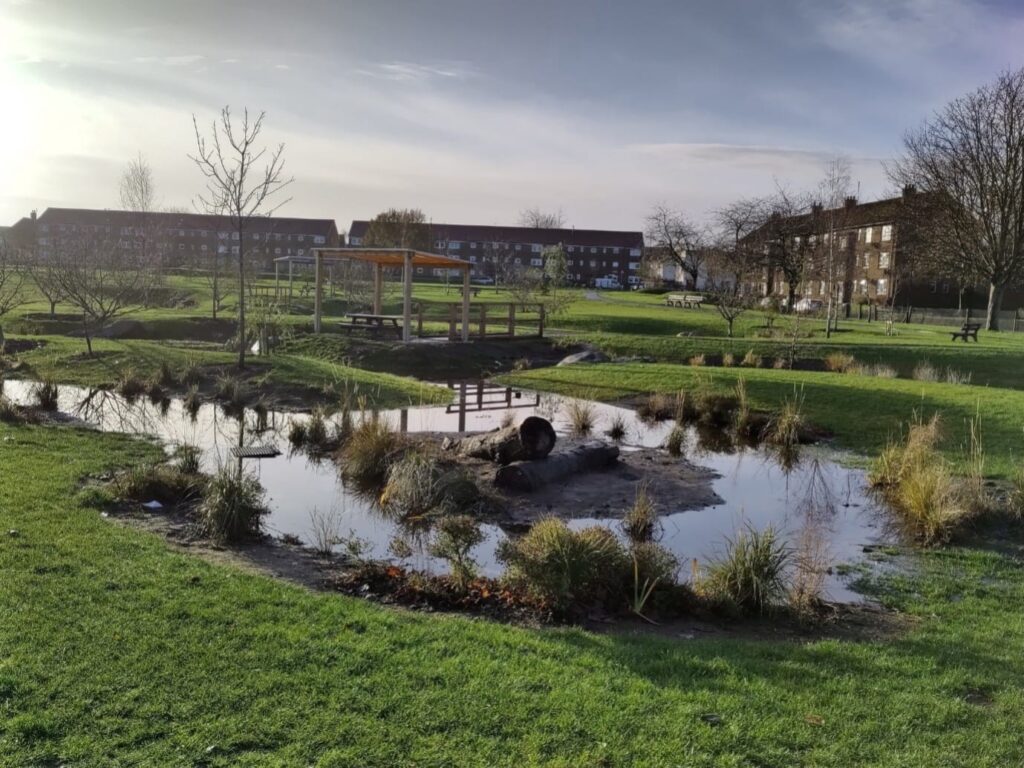THERE IS NOT ONE SINGLE ROUTE
TO GET TO NET ZERO EMISSIONS
In the pages below you can see the steps we plan
to take to reduce our emissions across 5 areas:


PROCESS EMISSIONS


TRANSPORT
AND TRAVEL

THERE IS NOT ONE SINGLE ROUTE TO GET TO NET ZERO EMISSIONS
In the pages below you can see the
steps we plan to take to reduce
our emissions across 5 areas:

ELECTRICITY

PROCESS
EMISSIONS

GAS

TRANSPORT &
TRAVEL

INVEST
We are committed to getting to net zero emissions whilst delivering excellent service and great value to our customers.
These commitments are based on what we know today and can, when added together, deliver our ambition of net zero emissions by 2040.
We will use the best scientific evidence to inform our actions. Where needed we will work with academic and research organisations to build understanding.
It is not just about getting to net zero emissions, it’s also about getting there in the most efficient way possible.
We will:
• understand, assess and prioritise options to reduce our emissions
• look to pilot and demonstrate the emissions impact
• implement at scale; and then
• sustain the activity where shown to deliver benefits.

BECOME MORE
ENERGY EFFICIENT
Our aim is to reduce the amount of energy we consume to deliver our vital water and wastewater services.
In the last 5 years we have delivered 19 GWh per annum of energy efficiency and will look to deliver a further 20% improvement.
ENERGY EFFICIENT PROJECTS
Installation of a real time control system at our largest wastewater treatment works at Shieldhall has reduced energy consumption by 15% per annum, reducing emissions as well as delivering savings.
USE LOWER CARBON
ENERGY PRODUCTS
Our aim is to operate all of our assets using renewable power.
STORNOWAY WASTE WATER
TREATMENT WORKS WINDFARM
AND GLENCORSE WATER TREATMENT
WORKS HYDRO TURBINE
Stornoway is 36% self-sufficient in renewable energy from 15 wind turbines on site; Glencorse is 91% self-sufficient in renewable energy from turbines on the incoming raw water.
NIGG WASTE WATER
TREATMENT WORKS ENERGY
FROM SLUDGE
now 52% self-sufficient
following investment on site.
We aim to transform the technology we use, and use this resource as a source of renewable energy.
We have started to transform our 1600 strong fleet from fossil fuels to zero emission vehicles.
We plan to accelerate as vehicle technology develops.
POOL CAR
ELECTRIC VEHICLE FLEET
We have recently changed all our pool
car fleet to electric vehicles and have
charge points located across our office locations.

EMBRACING LOW
CARBON CONSTRUCTION
WATER TREATMENT UNITS
Through improving the design of these, our supply chain partners have reduced the amount of steel and cladding used by 30%, reducing emissions by 50 tonnes per unit.
STORING AWAY EMISSIONS
THAT CANNOT BE AVOIDED
We know that we will not be able to reduce all our emissions to zero and will need to store away those which we cannot reduce.
PEATLAND RESTORATION
Restoring peatland helps lock up carbon but also delivers wider benefits for drinking water quality and biodiversity.
PROCESS EMISSIONS
Treating wastewater produces emissions
that cannot be avoided with current technology.
We will look to store carbon to offset these emissions.
Throughout this routemap we will be highlighting specific activities in key areas that will enable us to make progress and external factors that will support us. On our journey to net zero there are some key enabling activities that we will be focusing on.
CUSTOMERS AND COMMUNITIES
POLICY AND REGULATION

LOW ENERGY WATER
AND WASTEWATER
TREATMENT,
AMMONIA AND
METHANE RECOVERY
The development and deployment of innovative treatment processes are key to reducing energy consumption and reducing process emissions.

DIGITAL AND
ANALYTIC TOOLS
This is an area of technology that is rapidly changing that will enable emissions reduction across all our activities.
MATERIALS
RESEARCH
The development of low/zero emission materials for use in investment and operations are key to reducing our emissions.
WATER FOR
HYDROGEN
PRODUCTION
Scotland’s water resources will be different in a climate change future. We need to understand how we might recover wastewater final effluent and surface drainage water to support hydrogen production, ensuring the availability of fresh water for drinking and other uses.
HOW WE WILL MONITOR AND REVIEW OUR PROGRESS
To show progress towards net zero emissions we will review and measure our progress against our routemap. We are committed to open and transparent reporting of our performance and the lessons we have learnt on the way.
Annually, we will report on our operational and investment emissions and will track their progress to net zero.
We will focus on showing our progress in our four key areas of:

BECOMING MORE
ENERGY EFFICIENT
USING LOWER-CARBON ENERGY PRODUCTS
EMBRACING LOW CARBON CONSTRUCTION
STORING AWAY EMISSIONS THAT CANNOT BE AVOIDED
We will also report on our net zero and climate change adaptation measures in line with Scotland’s Public Body Reporting Requirements.
As we have developed this routemap we have been supported by an expert advisory panel who have helped significantly to test and shape our thinking.
The panel will continue to support us and review our progress, challenge our assumptions and provide support as we update our plans.
We will also work with stakeholders to demonstrate to our customers and communities that their money is being invested efficiently in delivering net zero emissions.
INTRODUCTION

TRANSFORMATION



ELECTRICITY

PROCESS
EMISSIONS

GAS &
FUEL OIL

TRANSPORT
& TRAVEL

INVESTMENT

STORING
CARBON
Scottish Water has established a framework for the supply of sustainably sourced hydrotreated vegetable oil that can be used by both Scottish Water and its construction partners. It’s a drop in fuel replacement that reduces emissions by 90% compared to conventional diesel.
Over the last year it has been widely adopted by our construction partners, displacing diesel use in excavators, cranes and other heavy plant. It is also being used to fuel generators to provide power for remote construction sites.
On our water mains rehabilitation programme its adoption is expected to reduce emissions by nearly 30%.
Scottish Water has been a partner in a project, led by the local community and supported by the National Lottery’s Community Fund, to regenerate the site once occupied by Douglas Primary School as a multi-functional greenspace.
Our team worked with the community to incorporate sustainable drainage features in the new park, which store and slowly release the rainwater that falls on surrounding roads and rooftops during storms. This eases pressure on the combined sewer network in the local area, as well as helping to protect the local environment and reduce flood risk from the Dighty Burn. Importantly, the community has been able to realise its wider aims by creating an attractive outdoor space that also provides a home for wildlife; and can be enjoyed for play, relaxation, exercise, events and the growing of food.

Planning is now underway to introduce more sustainable water management measures in the area surrounding the park, with the aim of disconnecting over 40,000m2 of land area from the combined sewer network; and helping to enable the development of more social housing in Douglas. Engagement with the community, including schools and other key stakeholders, is being carried out to help shape the proposals.
Work with the community and Dundee City Council on sustainable drainage for Douglas has helped to inspire the Water Resilient Dundee partnership. This initiative is now pursuing opportunities for more sustainable management of stormwater across the city, reducing flood risk in communities, creating capacity for development and enhancing amenity.